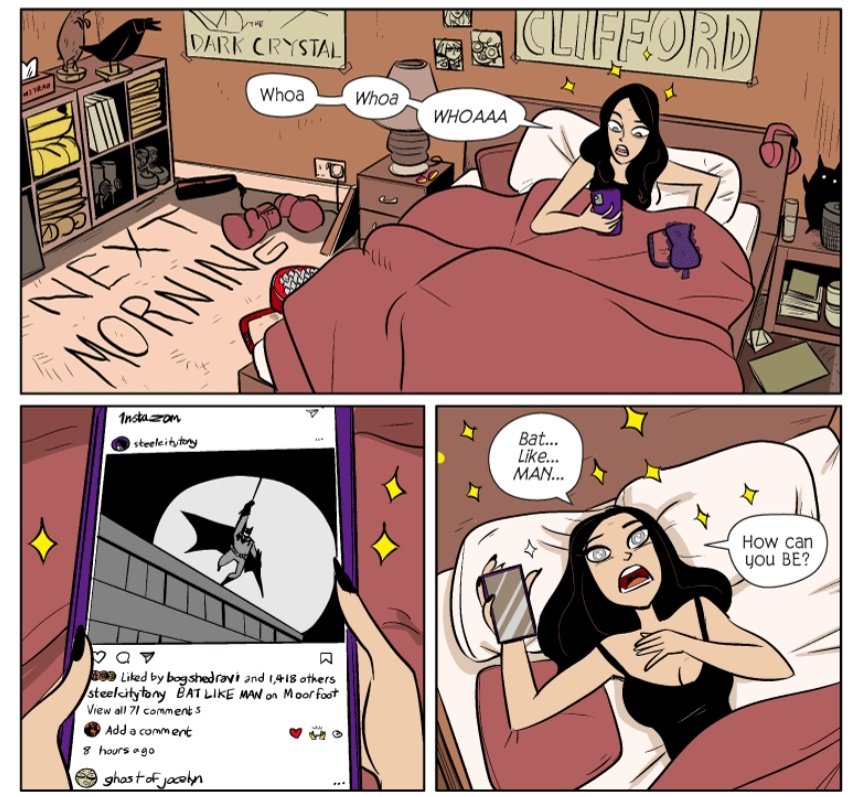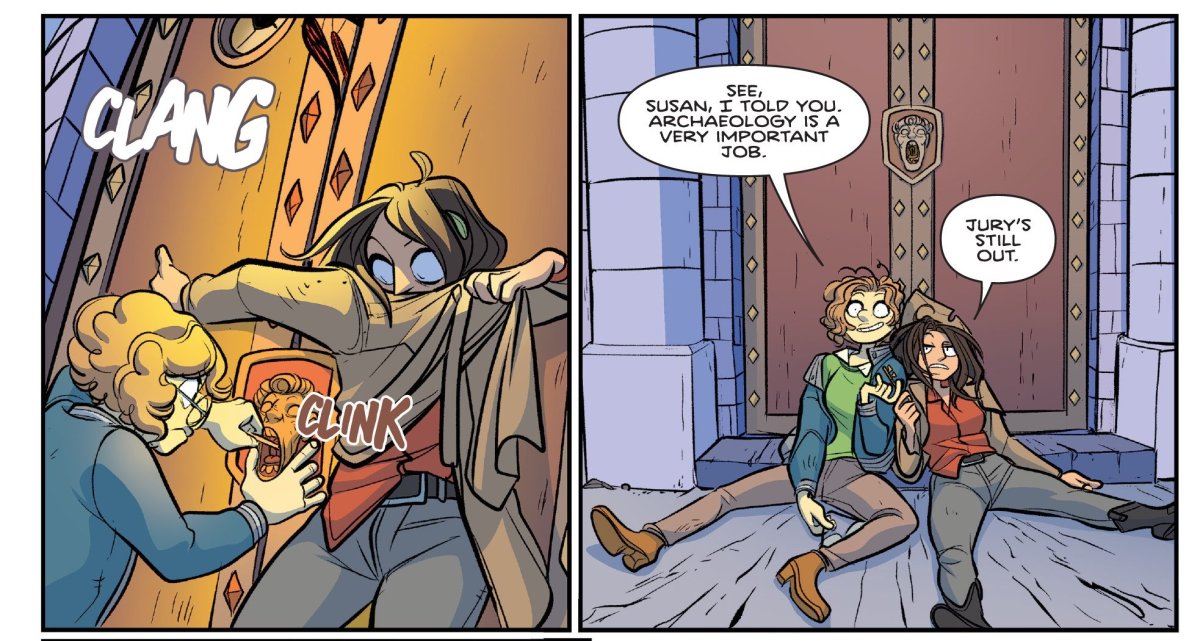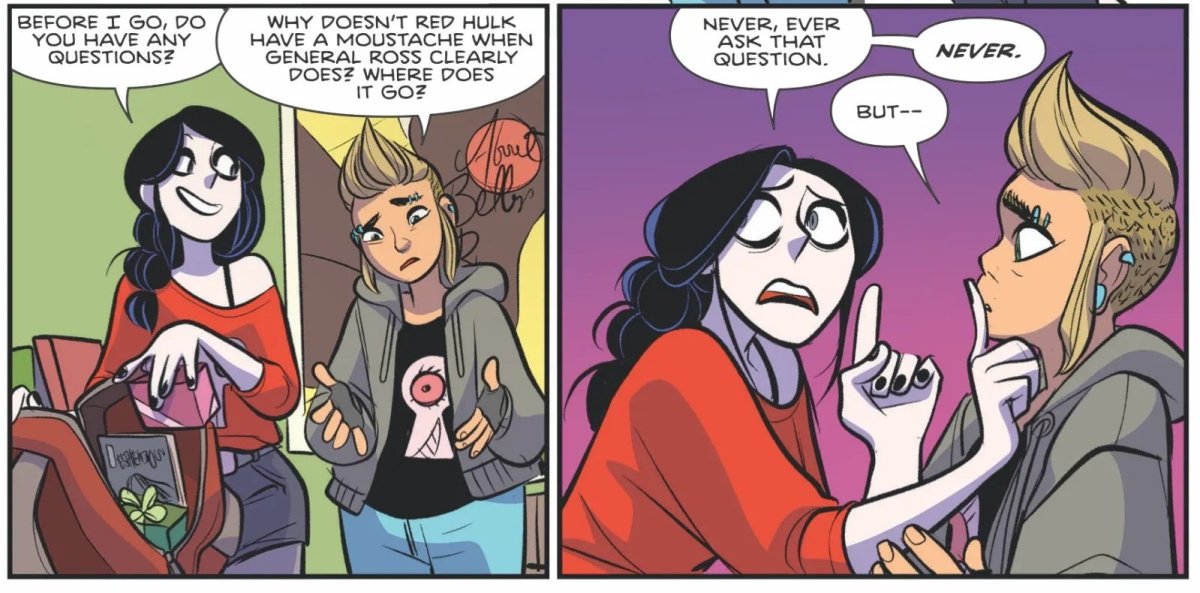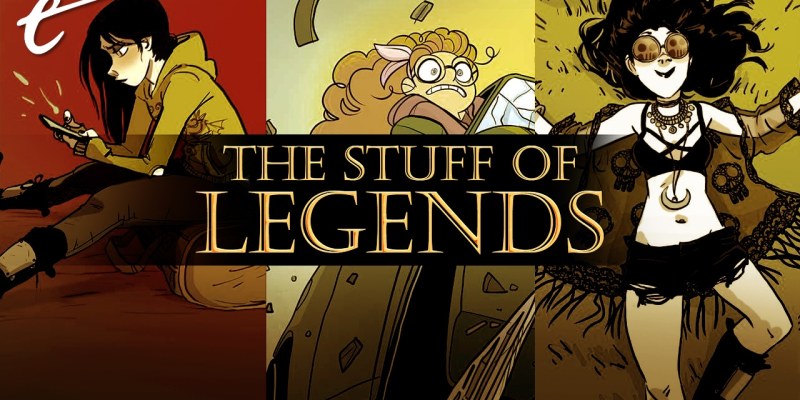Everybody wants their own shared universe these days, some multiversal mayhem to call their own and contest against the might of the Marvel Cinematic Universe (MCU). We’ve seen many attempts come and go, but there’s one longform universe that vastly outstretches the MCU, spanning multiple genres, platforms, and even publishers. Yet it has also remained approachable. I am talking about the shared universe of Giant Days.
It’s about grade school kids and college students who happen to meet Baba Yaga as she goes to war with a local football team… and some people who may or may not have been dragged to hell. It’s also an intensely charming coming-of-age story with an inclusive lens, and it was all written by one person, John Allison.
For those unfamiliar, Allison is one of the most prolific indie comics writers of our age. He’s been nominated for and won an Eisner. His collected works span well over two dozen volumes, many of which he drew himself. His original webcomics date back to 1998! You can see his capability for art and storytelling evolve in real time, going from webcomics to printed releases.
It wasn’t until the comic Giant Days that his talents combined with artists Max Sarin and Lissa Treiman. Together, they effectively crafted an introduction to what’s commonly referred to as the “Bobbinsverse.” One of the series’s most persistent protagonists is Esther de Groot, a goth heartbreaker whom readers can follow from her grade school days up to after graduating college.

The first issue of Giant Days’ full-time run chooses to focus on Esther, but without crowding out her co-stars Daisy Wooton and Susan Ptolemy. It summarizes the similarly named Giant Days miniseries swiftly and eases longtime fans into its new normal, while also enabling newcomers to embrace the girls as standalone entities.
That’s the beauty of Allison’s writing. The Bobbinsverse has an amazingly cohesive world stretching over two decades. Starting in the fictional town of Tackleford, the series has seen characters across the globe, if predominantly focused on the British Isles. However, unlike in some shared universes — you can totally ignore whatever doesn’t interest you.
Need something chaotic in a way only webcomics can be? There’s Bobbins and Bobbins NOW. Just want British Scooby-Doo? Read Bad Machinery. Prefer things a bit more grounded and mature? There’s Wicked Things. Want to feel warm and fuzzy with a pinch of romance? Giant Days. Not to mention all the Scary Go Round spinoff storylines.
There’s also Steeple. We don’t talk about Steeple.
Alongside a handful of other standouts such as Charlotte Grote and Shelley Winters, readers follow Esther through all the growing pains and blissful moments of growing up. John Allison is unflinching yet sympathetic when it comes to struggles with puberty and dicier topics like losing one’s virginity. The greater mysteries and struggles that surround Esther and company are there to help frame the personal drama.

While there were definitely some more supernatural moments along the way, the urban fantasy aspect of Giant Days works as either literal or metaphorical. Everything is generally so breezy and charming that, sure, maybe accidentally awaking ancient spirits is a normal archaeologist problem. Perhaps spineless corporate manipulators are in fact energy vampires. Maybe your neighbor really is a fishman born of Atlantis. Or these are all heightened reality metaphors for how absurd the world can be.
But to get back to what makes Giant Days such an effective shared universe: Everything in the Bobbinsverse takes and leaves what it needs for the best story. Esther was originally a background character, as was Charlotte’s sister. When it’s relevant, people appear and connect to the story in meaningful ways. Charlotte’s youthful bluntness is what helps Daisy finally break up with her girlfriend — Charlotte otherwise barely factors into Giant Days. Yet, when she comes up, she’s properly explained, fulfills a crucial role, and is free to grow up and solve crimes in Wicked Things.
Most importantly, these many myriad cameos and crossovers are never overwrought. There is no elaborate affair about how Luke Skywalker is going to stand around and be a jerk for 10 minutes. Every inclusion is purposeful to the story — not branding — adding to the overall journey.

Not to mention, by virtue of experimenting and focusing on characters based on public reception, we get spinoffs for characters that are proven to be interesting. It’s not about capturing a specific aesthetic or tone, but what best embodies the characters the story focuses on. It’s how the Bobbinsverse stays incredibly fresh despite decades spent in a single setting.
Obviously, there’s the benefit of a unified creative vision thanks to John Allison writing it all. However, that makes it all the more remarkable how varied the stories remain. It would’ve been easier to just tell a single story set to a single tone, just escalating over the years. It’s the pitfall other standout internet series like Red vs. Blue have fallen prey to. It’s something I’m increasingly terrified certain cinematic and expanded universes are soon to stumble over, if they haven’t already.
It’s not the scale of production or the amount of people involved that make a great universe. A great setting takes heart, makes you care, gets you invested, and makes you pumped when another thread unfurls to present more thrilling tales. That’s what makes Allison’s world so arrestingly wonderful. It’s not trying to sell you anything; it’s just telling you a damn good story — one of many that appeal to countless readers.
So if you’re tired of having to read up on every new Marvel credits teaser — crack open the Bobbinsverse.
